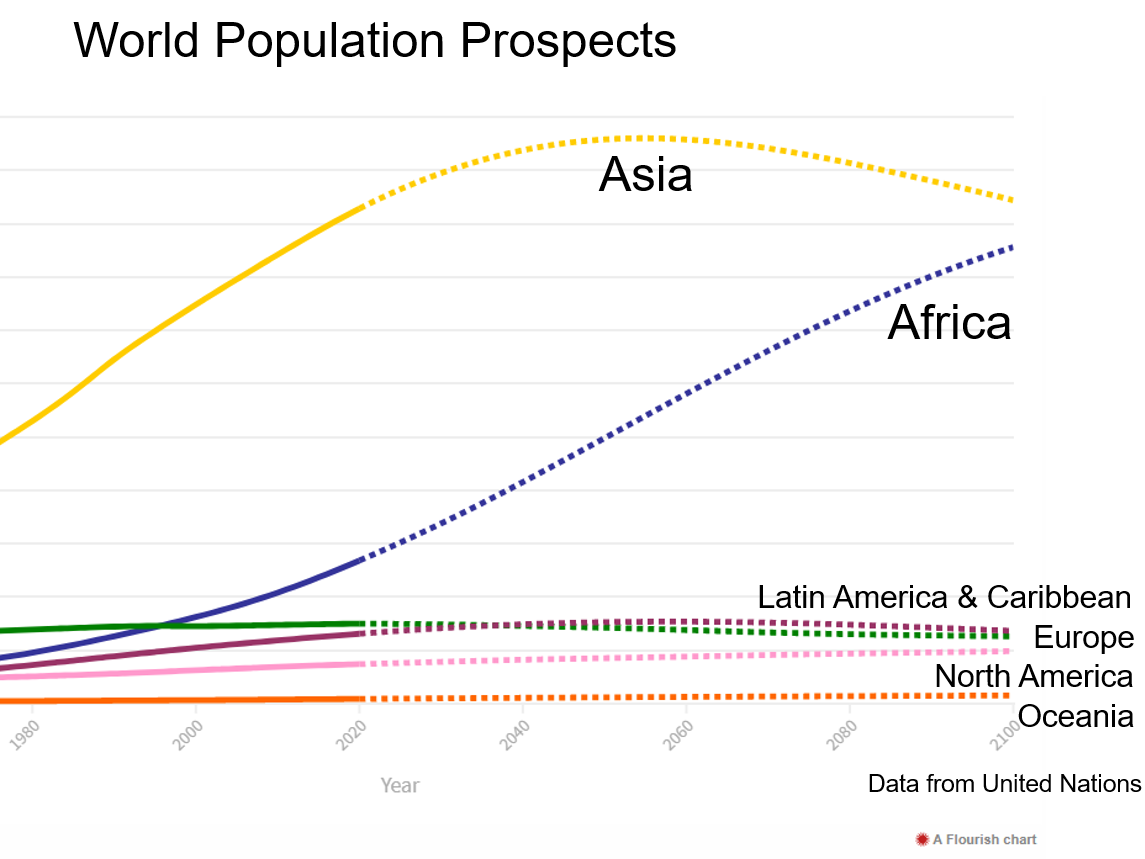Pick Up
333. July 11 is World Population Day

World Population Day was proposed by the United Nations Population Fund in 1989 and officially designated as an international day by the United Nations General Assembly in 1990 to enhance awareness of the world's population problems. The day was chosen because the world's population exceeded 5 billion on July 11, 1987.
According to the “State of World Population 2021” released by the United Nations Population Fund (UNFPA) on April 14, 2021, the world population in 2021 will be 7.875 billion, an increase of 80 million from last year. According to the United Nations World Population Prospects 2019, the world population is expected to reach 8.5 billion in 2030, 9.7 billion in 2050, and 10.9 billion in 2100, with the population of sub-Saharan Africa expected to almost double by 2050.
Population transition(Top 15 countries)
Click the start button to begin.
Data:UN World Population Prospects 2019
More than half of the world's population growth by 2050 is projected to be concentrated in nine countries: India, Nigeria, Pakistan, Democratic Republic of Congo, Ethiopia, Tanzania, Indonesia, Egypt, and the United States. We created a bar chart showing the population transition of the top 15 countries, and Africa has increased from only 3 countries to 7 countries in 2020 based on the mid-year data from the World Population Projections 2019. The bar chart also predicts that India will surpass China in 2026-27 to emerge as the world's most populous country.
The acceleration of qualitative and quantitative changes in food consumption due to projected global population growth and urbanization has the potential to affect all stages of food supply, distribution, and demand. On July 14 (Wed), the FAO Liaison Office in Japan, with the support of JIRCAS, will host an online event to commemorate the publication of the OECD-FAO Agricultural Outlook Report 2021-2030, which summarizes trends in global agricultural markets. The authors will give live presentations and discuss strategic policy, science and technology areas necessary to maintain global food security. We look forward to your participation.
Launching Event of the OECD-FAO Agricultural Outlook 2021-2030
■ Date:July 14 (Wed), 2021 15:00~16:30 (JST); 8:00~9:30 (CET)
■ Event Format:Online(ZOOM)
■ Program:https://www.jircas.go.jp/en/event/2021/e20210714
■ Registration:https://www.jircas.go.jp/en/event/2021/entry/oecd_fao_outlook
■ Deadline:July 12 (Mon), 2021 17:00 (JST); 10:00 (CET)
* The bar chart of population transition was created using Flourish (https://flourish.studio/).
References
The State of World Population 2021:
https://www.unfpa.org/sowp-2021
World Population Prospects 2019
https://population.un.org/wpp2019/
Bar chart race (top 15 countries in population projection)
https://public.flourish.studio/visualisation/2442816/
Population Prospects by Region (Data from UN)
https://public.flourish.studio/visualisation/6574171/
Contributor: KANAMORI Norihito (Information and Public Relations Office)
